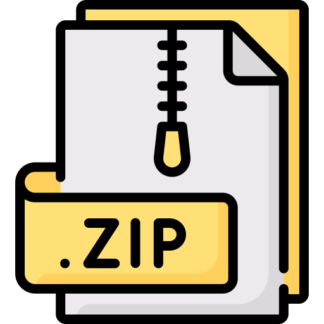Description
Summary
In this homework, you’ll write code that indexes words from multiple text files, and outputs an inverted
index that looks like this:
Description
You will need a collection of text files to index, they are. After you unzip it, you’ll get two directories
with text files in them: ‘devdata’ (with 5 files), ‘fulldata’ (with 74 files).
The input data is already cleaned, that is all the \n\r characters are removed – but one or more \t chars
might still be present (which needs to be handled).
There is punctuation, and you are required to handle
this in your code: replace all the occurrences of special (punctuation) characters and numerals with the
space character, and convert all the words to lowercase. A single ‘\t’ separates the key (docID) from the
value (actual document contents). In other words, the input files are in a key-value format where docID is
the key, and the contents are the value; the key and value are separated by a tab:
here
The above format is to help you build the inverted index easily – the filename (docID) is in the file’s text so
you can simply extract it.
As you know, Google invented MapReduce, to help them do this on a massive scale. For this HW, we could
have based it on GCP/Azure/AWS/… where you would upload the files to the cloud and launch MapReduce
jobs there. To get practice doing this, please do try it own your own, after this course.
But for this HW, there is a much simpler way! It’s this [contains code I got from elsewhere, and the custom
environment I set up to run it (ie. the minimal collection of .jar files needed, including the one for
MapReduce)]: start with – it is a self-contained,
complete, minimal MapReduce example that counts words in two input documents.
Study it thoroughly –
see what files are used (code, data, config), how the code is organized (a single class called WordCount),
how it is run (we specify input and output folders). Be sure to look at the three columns: files on the left, file
contents in the center, execution on the right.
Fork it,to do your homework – in other words, do it on your
own repl.it area (you need to sign up for a free account). FYI, repl.it is built on top of GCP:
[how cool!].
For the HW, you need to create a unigram index, and a bigram one. Details are in the two sections that
follow.
Unigram index
You will need to create a file called unigram_index.txt, containing words from files in fulldata.
Modify the mapper in the repl.it link above , to output(word, docID), instead of what it currently outputs
for word counting, which is (word, count); also, in your reducer.
Bigram index
You’ll create a file called selected_bigram_index.txt, containing the inverted index for just these five
bigrams, using files in devdata:
computer science
information retrieval
power politics
los angeles
bruce willis
Modify your mapper, to output (word1 word2, docID) pairs, rather than the (word, docID) pairs you had in
the unigram task. There is no need to change your reducer.
Extra details
If your execution takes way too long, or crashes, you can simply make the data files smaller by deleting text,
starting from the end. Each file contains 500000+ words, you can make it as small as 50000; but do keep
the file count the same, ie. use all the files in devdata as well as fulldata.
You could ‘test’ your code using the devdata collection for unigrams as well, then do it ‘for real’ (in
‘production mode’) on the fulldata set of files. Or, for both unigrams and bigrams, you can use your own set
of files, eg. a.txt, b.txt… e.txt (5 files), each with a paragraph from
https://cloud.google.com/customers/repl-it
use a HashMap data structure
https://www.gutenberg.org/files/74/74-
[:)] – that way your code will run quite fast and output results, so you can make rapid alterations in a
shortened develop-run-debug cycle. To develop+test your code, you can even simply use the two sample
files I have in the repl.
If you like, you can read/do the ‘official’ MapReduce tutorial
UPDATE, 3/23: is a collection of shorter data files [each file has fewer words] – you have the choice of
using these instead of the ‘big’ files. The filenames, and the file counts are the same as for the
(‘big’) set of files, the only diff is that there are fewer words in each. For the bigrams, you’ll
get different counts compared to the originals, but that shouldn’t/doesn’t matter – if you use these smaller
files, just make sure you’re creating a bigram index that shows files and counts for ‘los angeles’ etc. Many
files end with a chopped off word, eg. ‘sabb’, but that’s ok. Also, if you’re curious, here’s how I the
fulldata/* files 🙂
Rubrics
Your (max 10) points will come from fulfilling these:
4 points for the unigram index entries, contained in unigram_index.txt
4 points for the index entries to the words mentioned in the bigrams section above, contained in selected_bigram_index.txt
1 point for screenshots of the output folder (the output folder is what you specify as the second argument while running the job)
for the job for unigrams, and bigrams (two screenshots)
1 point for your code, for unigrams and bigrams (two source files)
Getting help
There is a hw3 ‘forum’ on Piazza, for you to post questions/answers. You can also meet w/ the TAs, CPs, or
me.
Hope you have fun doing the HW 🙂
0.txt
here.
Here
original/previous
shortened



